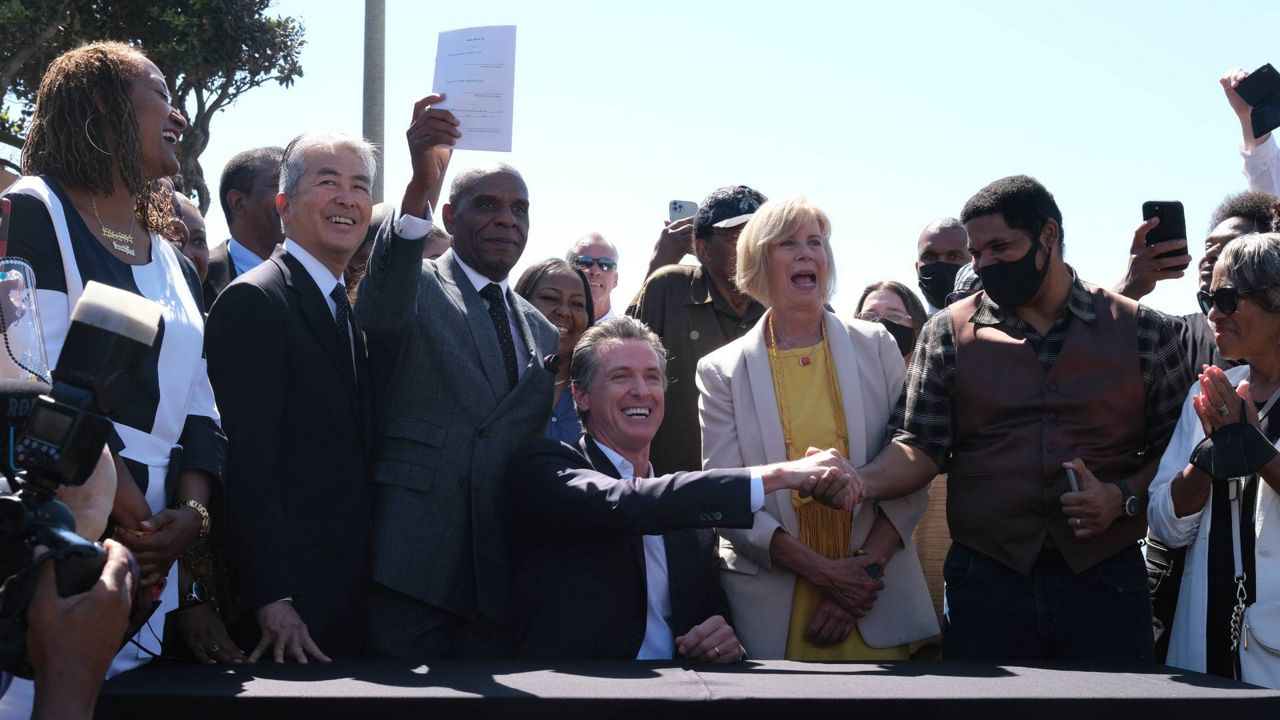MANHATTAN BEACH, Calif. (CNS) — After a protracted legal process that led to the historic return of pristine Manhattan Beach coastal property to a Black family that had the land stripped away nearly a century ago, the family has decided to sell the parcel back to the county for $20 million, the county confirmed Tuesday.
"The seizure of Bruce's Beach nearly a century ago was an injustice inflicted upon not just Willa and Charles Bruce but generations of their descendants who almost certainly would have been millionaires," Los Angeles County Supervisor Janice Hahn said in a statement Tuesday.
"I fought to return Bruce's Beach because I wanted to right this wrong. This fight has always been about what is best for the Bruce family, and they feel what is best for them is selling this property back to the county for nearly $20 million and finally rebuilding the generational wealth they were denied for nearly a century. This is what reparations look like and it is a model that I hope governments across the country will follow."
Charles and Willa Bruce purchased the land in 1912 and operated a resort for Black residents until the city of Manhattan Beach condemned the property under a false pretense of developing a park. Instead, the property sat vacant for years after the Bruces and other Black families were evicted from the area.
Hahn spearheaded the effort to have the land returned to the Bruces' descendants. The county, which ultimately wound up owning the property, held a formal ceremony in July to officially hand over the property deed to the family.
Under an agreement approved by the Board of Supervisors in late June, the land was officially transferred to Marcus and Derrick Bruce, great- grandsons of Charles and Willa Bruce. The Bruces were then set to lease the land back to the county for $413,000 a year for the continued operation of county lifeguard facilities at the site.
The agreement also included clauses that would allow the Bruces to sell the property to the county for a price not to exceed $20 million.
The family this week opted to make that $20 million sale.
In an appearance Tuesday on the Tavis Smiley talk show on KBLA radio, Bruce family attorney George Fatheree said a variety of factors played into the decision to sell the land back to the county.
"The return of the property and the ability to sell the property and take the funds and invest it in a way that's important to their lives represents an important opportunity for my clients to get a glimpse of that legacy that was their's," Fatheree said.
He noted that there are "multiple family members" involved in the decision-making process — "each at their own stage in life, some starting families, some nearing retirement, some caring for aging parents."
Fatheree also said that any effort by the family to develop the property would likely involve a lengthy approval process with the city of Manhattan Beach and the Coastal Commission.
The attorney called the decision to sell the land "a positive development" giving the family members immediate access to financial resources that had long been denied them.
Sen. Steven Bradford, D-Gardena, who authored state legislation that allowed the county to transfer the property to the Bruce family, said in a statement that he supports the family's decision to sell the land.
"They are exercising a right that should have never been taken away from them," Bradford said. "I understand why the Bruce family would want to sell the property. The current zoning regulations would prevent the Bruce family from developing the property in any economically beneficial manner. Based on that fact it leaves LA County as the only logical purchaser of the property.
"... In no way does selling the property diminish the powerful example that the return of Bruce's Beach represents in America. They were able to reclaim what was rightfully theirs."
Willa and Charles Bruce purchased their land in 1912 for $1,225. They eventually added some other parcels and created a beach resort catering to Black residents, who had few options at the time for enjoying the California coast.
Complete with a bathhouse, dance hall and cafe, the resort attracted other Black families who purchased adjacent land and created what they hoped would be an oceanfront retreat.
But the resort quickly became a target of the area's white populace, leading to acts of vandalism, attacks on vehicles of Black visitors and even a 1920 attack by the Ku Klux Klan.
The Bruces were undeterred and continued operating their small enclave, but under increasing pressure, the city moved to condemn their property and surrounding parcels in 1924, seizing it through eminent domain under the pretense of planning to build a city park.
The resort was forced out of business, and the Bruces and other Black families ultimately lost their land in 1929.
The families sued, claiming they were the victims of a racially motivated removal campaign. The Bruces were eventually awarded some damages, as were other displaced families. But the Bruces were unable to reopen their resort anywhere else in town.
Despite the city claiming the land was needed for a park, the property sat vacant for decades. It was not until 1960 that a park was built on a portion of the seized land, with city officials fearing the evicted families could take new legal action if the property wasn't used for the purpose for which it was seized.
The exact parcel of land the Bruces owned was transferred to the state, and then to the county in 1995.
The city park that now sits on a portion of the land seized by the city has borne a variety of names over the years. But it was not until 2006 that the city agreed to rename the park "Bruce's Beach" in honor of the evicted family, a move derided by critics as a hollow gesture.



